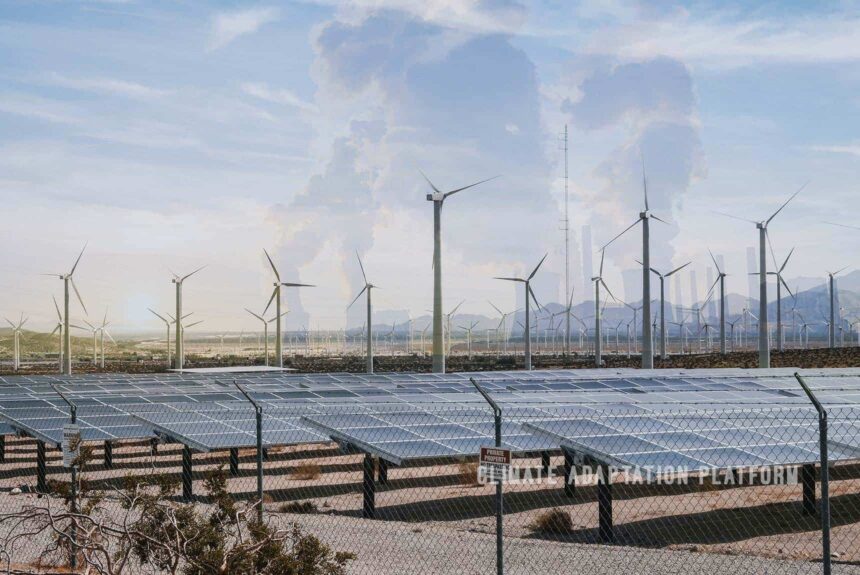As the world’s largest economy and the second biggest emitter, other countries look to the United States to lead in climate action.
The United States not only has the biggest economy in the world but also maintains dominance in equally important areas such as military capacity, technology and innovation, cultural influence, resilience, and future resources, among others.
Jennifer Granholm, America’s energy secretary, declares that the country provides a suite of carrots to make the United States irresistible for investors for clean energy. Granhold refers to the three big laws that aim to make the country a hotspot for clean-energy investments.
The first is the Bipartisan Infrastructure Law passed on November 2021, a once-in-a-generation and the most significant investment in the nation’s infrastructure and competitiveness that includes upgrading the power grid, public transit, tackling legacy pollution, passenger rail, increasing infrastructure resilience and clean electric buses, and affordable high-speed internet.
The second is the Infrastructure Reduction Act (IRA), passed on August 2022 provides billions of dollars in incentives, grants and loans to support new infrastructure investments in clean energy, transportation and the environment. The third is the CHIPS ACT signed into law on 9 August 2022, funding to boost domestic research and manufacturing of semiconductors in the United States.
According to Deloitte, the three laws combined to provide more than $2 trillion in authorised federal funding and incentives for up to 10 years. However, funding alone does not guarantee success—the proper execution of all levels of government is the one that ensures it.
Vijay Vaithesswaran, The Economist Global Energy and climate innovations editor, present three obstacles that stand in the way of making the US a potential clean-energy superpower.
Here’s what he wrote:
“The most obvious obstacle is the fact that America suffers from the BANANA syndrome: Build Absolutely Nothing Anywhere Near Anybody. A huge amount of infrastructure needs to get built if a radical decarbonisation of the economy is to take place over the next decade, but even existing projects to install clean energy and upgrade transmission lines are backlogged for years. Congress must act soon to break this logjam. This is unlikely given that a presidential election cycle is upon us, but even so, there are some hopeful signs of bipartisan compromise on the matter.”
“The second big worry is that America-first provisions written into the three laws, which enjoy bipartisan support in part because they are designed to thwart the perceived threat from China, will bog down decarbonisation. Protectionist measures, if applied with rigour by bureaucrats, could well make it more costly to build clean energy and lead to slower climate progress. This remains a risk, but there are early signs of pragmatism in how the Biden administration implements such rules on labour standards and “environmental justice”. For example, a recent bureaucratic ruling on EV supply chains was written broadly so that sourcing from American allies would be eligible for subsidies. But a tilt towards protectionism remains a risk.”
“Finally, because American politics will not allow for the ideal policy solution of an economy-wide, refundable federal carbon tax, the IRA plumps instead for showering money on every type of decarbonisation technology imaginable—an approach Senator Joe Manchin, an influential Democrat with fossil-fuel interests, calls an “all of the above” strategy. The problem with this all-carrots strategy is that it is hugely wasteful compared to carbon pricing and insufficient to achieve climate ambitions. New analysis from the Rhodium Group, a research outfit, shows that the IRA alone, while helpful, cannot achieve Mr Biden’s goals for 2030.”
Vaithesswaran adds the EPA and other agencies have an opportunity to strengthen various regulations that would act as “sticks” to bolster these laws. Recently the EPA proposed a regulation on automotive tailpipe emissions that they think could increase EV ownership to 67% by 2032 from last year’s meagre 8% rate.
And if the country manages to overcome these three obstacles, then the three laws will be able to decarbonise its energy sector and economy, Vaithesswaran says.
Source:
Eggers, W., Pollari, K., & O’Leary, J. (2023, 1 March). Executing on the $2 trillion investment to boost American competitiveness. Deloitte. Retrieved from https://www2.deloitte.com/us/en/insights/industry/public-sector/infrastructure-bill-projects-agency-execution.html
America’s chance to become a clean-energy superpower. (2023, 5 April). The Economist. Retrieved from https://www.economist.com/united-states/2023/04/05/americas-chance-to-become-a-clean-energy-superpower



Leave a Reply